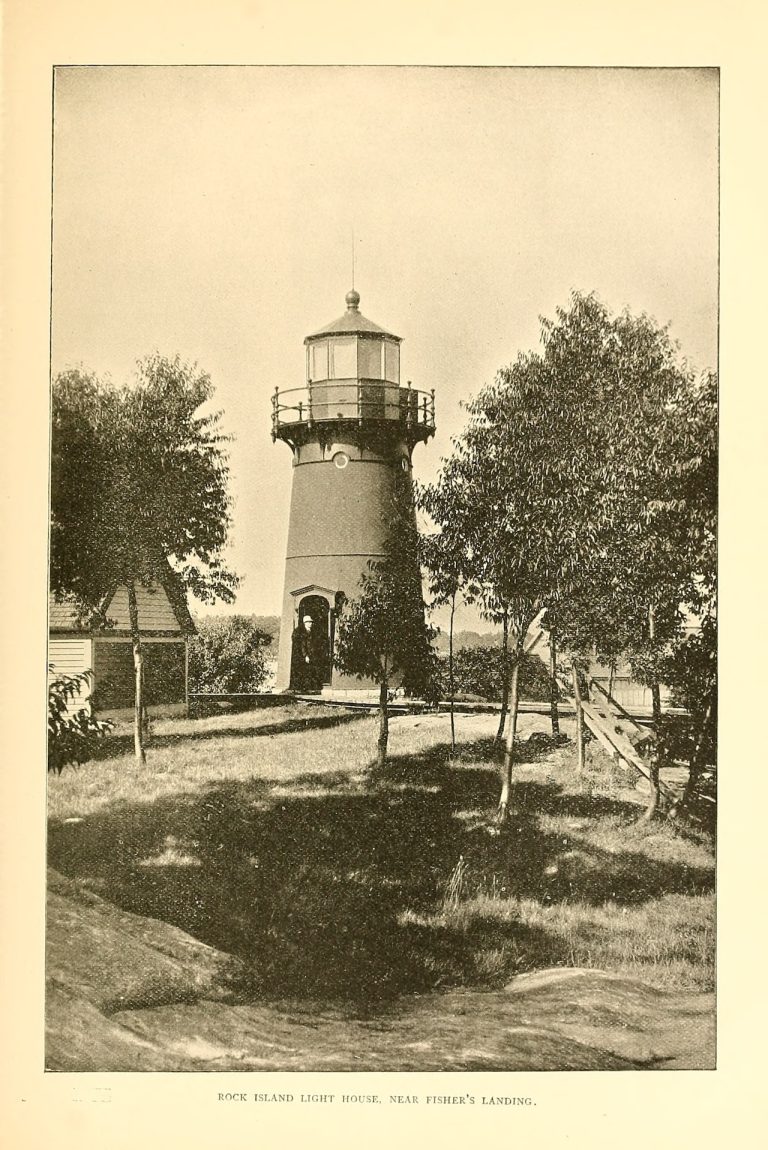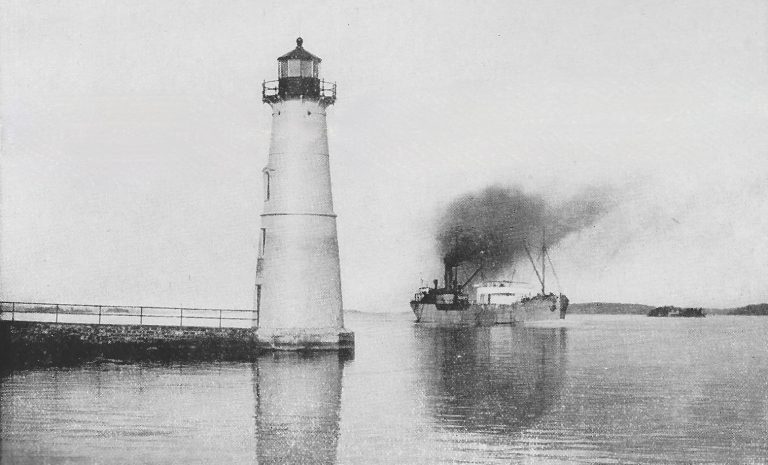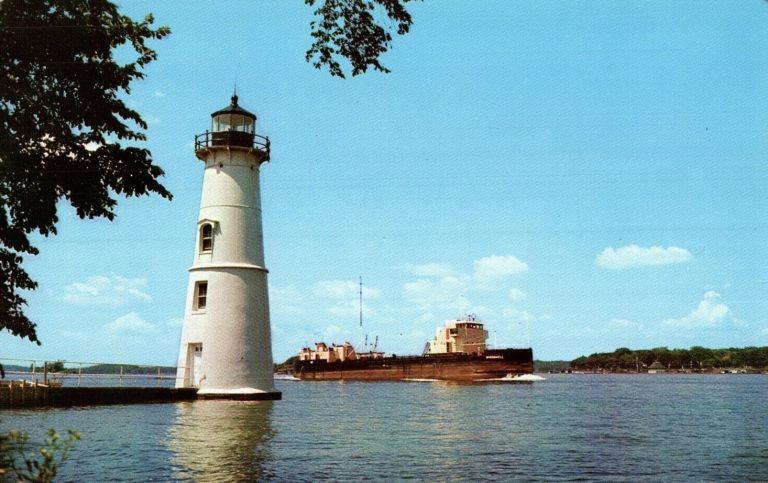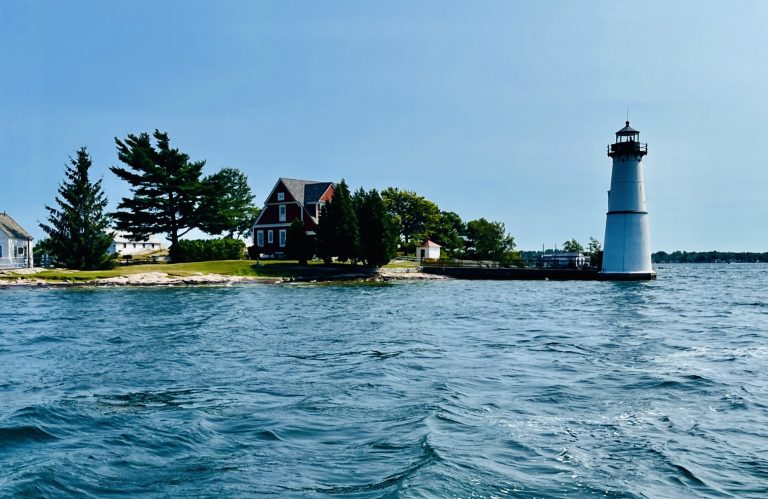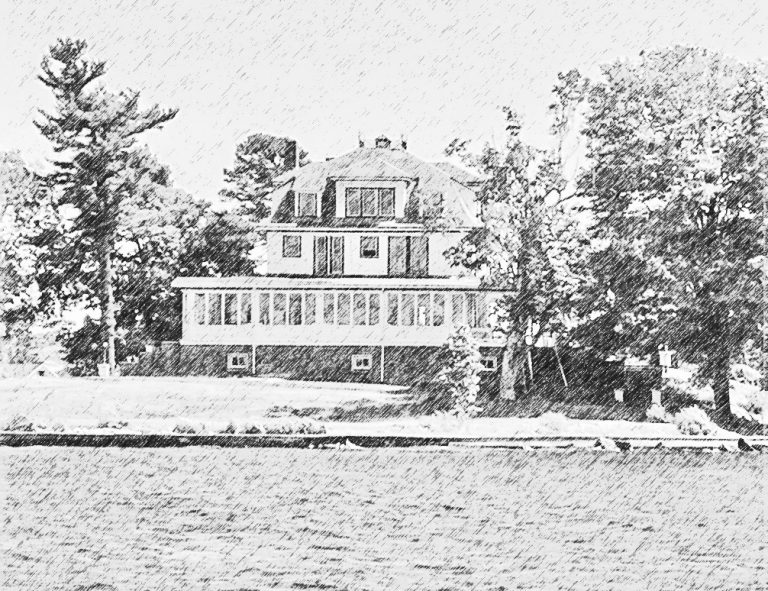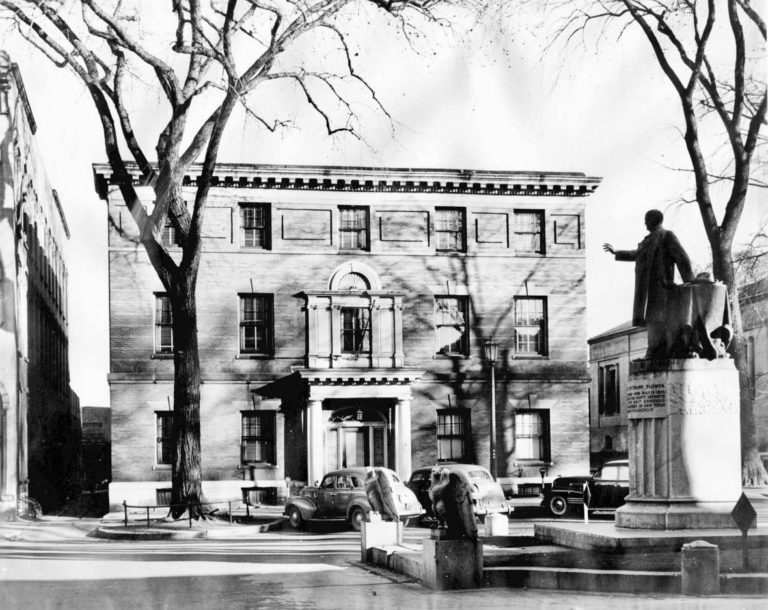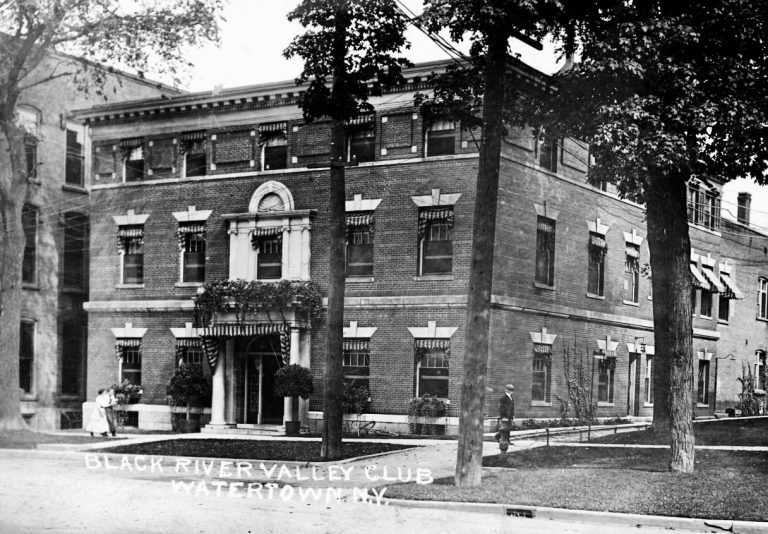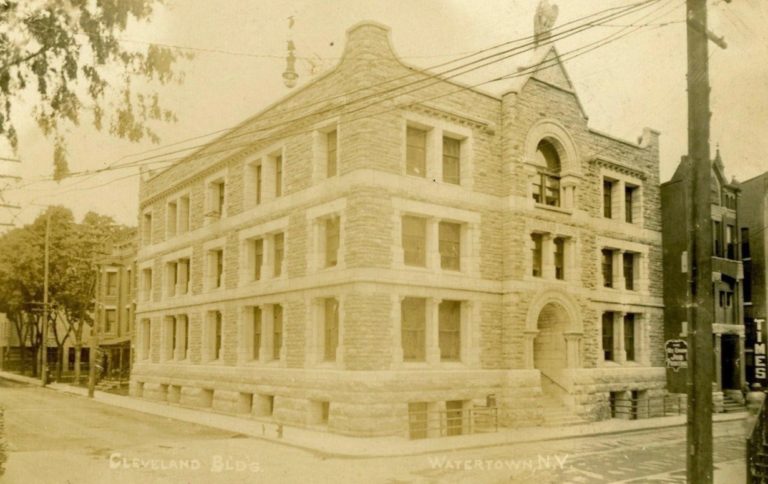Rock Island Lighthouse, Pirate Bill Johnston, And Its Lighthouses
The Rock Island Lighthouse on the St. Lawrence River near the Isle of Pines and Fisher’s Landing was one of Congress’s three original lighthouses approved to be constructed on the river in the mid-1840s. Constructed as a tower attached atop a brick building serving as the lightkeeper’s dwelling, the “lighthouse” underwent numerous changes over its 175 years, while one original building, a smokehouse built in 1847, remains.
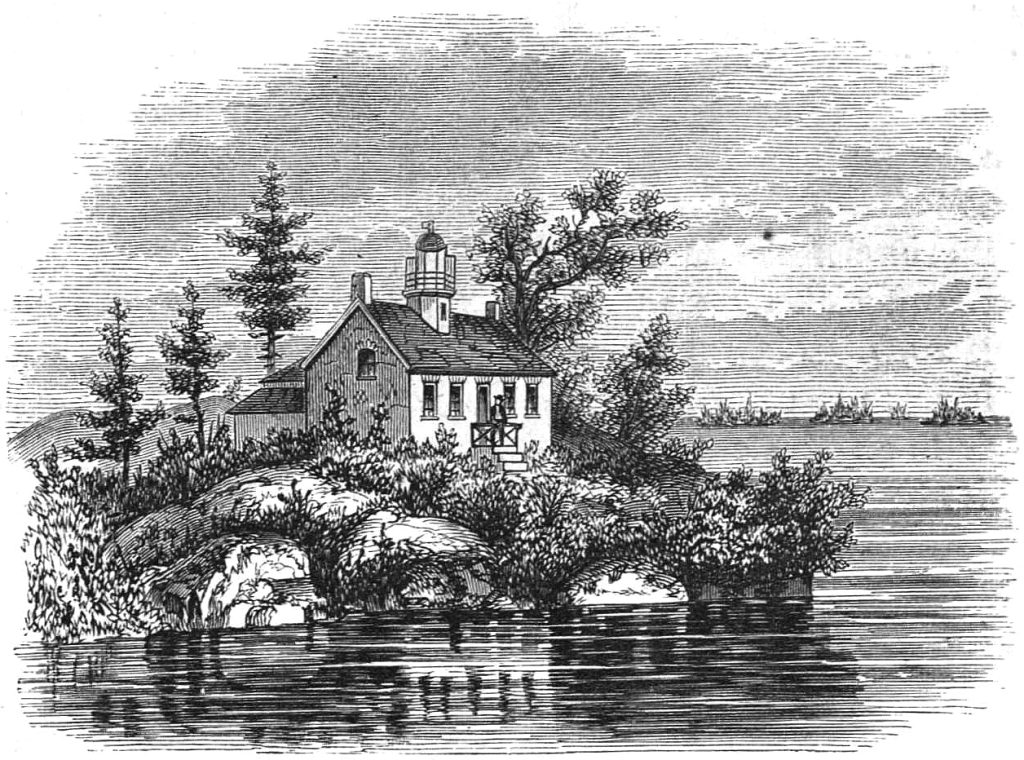
One of the first, if not the first, lightkeepers, is renowned Pirate William “Bill” Johnston. A decade earlier, Johnston had set the British steamer, Sir Robert Peel afire in retaliation for cutting the small steamer Caroline loose from its docks in November of 1837 and sending it over Niagara Falls.
This account of Bill Johnston’s ascendence to lightkeeper was first printed in The Observer in On-The-St. Lawrence, and republished on March 16, 1916’s Watertown Daily Times. Below is the passage of the account of Johnston, who was a Canadian who resided in Kingston until middle age:
Through some ambiguous clause in the extradition laws of those days our government decided it hadn’t the authority to deport Johnston to Canada, so the affair was ended.
The Rock Island light house, near Thousand Island Park, was then being constructed, and Johnson decided that his valor and patriotism in destroying the Canadian Steamer entitled him to be the first tenant. Other applications there were, but he would and did outwit them.
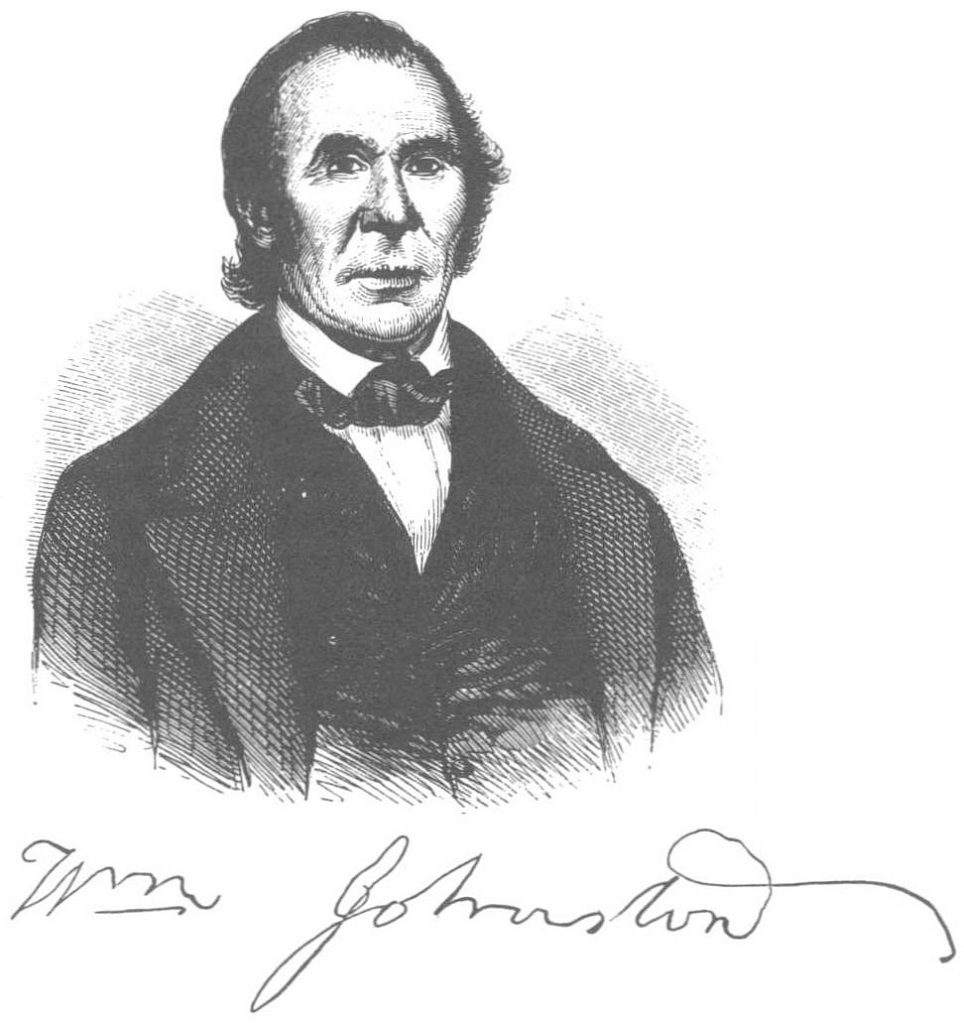
There were no railroads between here and Utica, nor between Utica and Albany, but one or two short disconnected links. There were stage routes through the wilderness, but progress was slow and fare high, so Johnston started on foot on a 200 mile journey to Albany, where he arrived three weeks later.
He didn’t wait for ceremonious introduction to the chief magistrate of the state, but stalked to his presence, inquiring, “Are you the governor of this state? If so, I am introducing myself as Bill Johnston, the man who burned the Robert Peel. I want the job of keeper of Rock Island Lighthouse, up on the St. Lawrence, and I want you to see to it I get it. I’m going back up there as I came, on foot, and I’m going to take possession of that lighthouse immediately upon arriving there.”
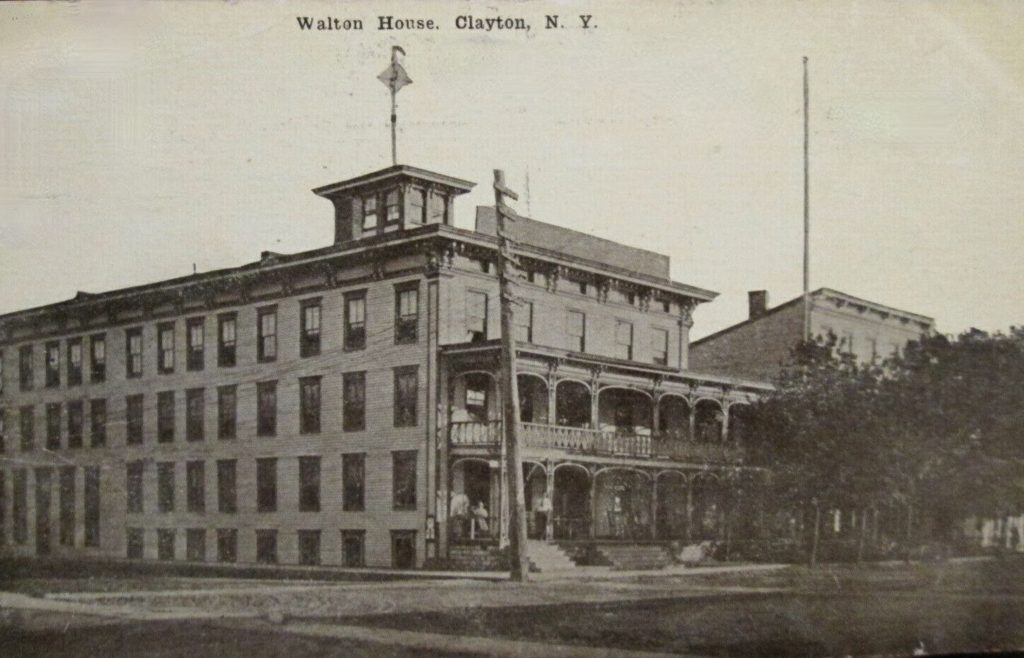
But he didn’t have to take forcible possession, as the governor decided a man who would walk 400 miles for a job was entitled to it, and his influence with Washington authorities secured the appointment of the determined applicant.
Bill Johnston, with all his rough and defiant exterior appearance and manner, was almost a fanatic in his love of the beautiful, and every summer at Rock Island and Fishers Landing, where he afterwards resided, roses and lilacs come up from the roots his hand planted in 1840. He spent his last years in Clayton and died at the Walton House.
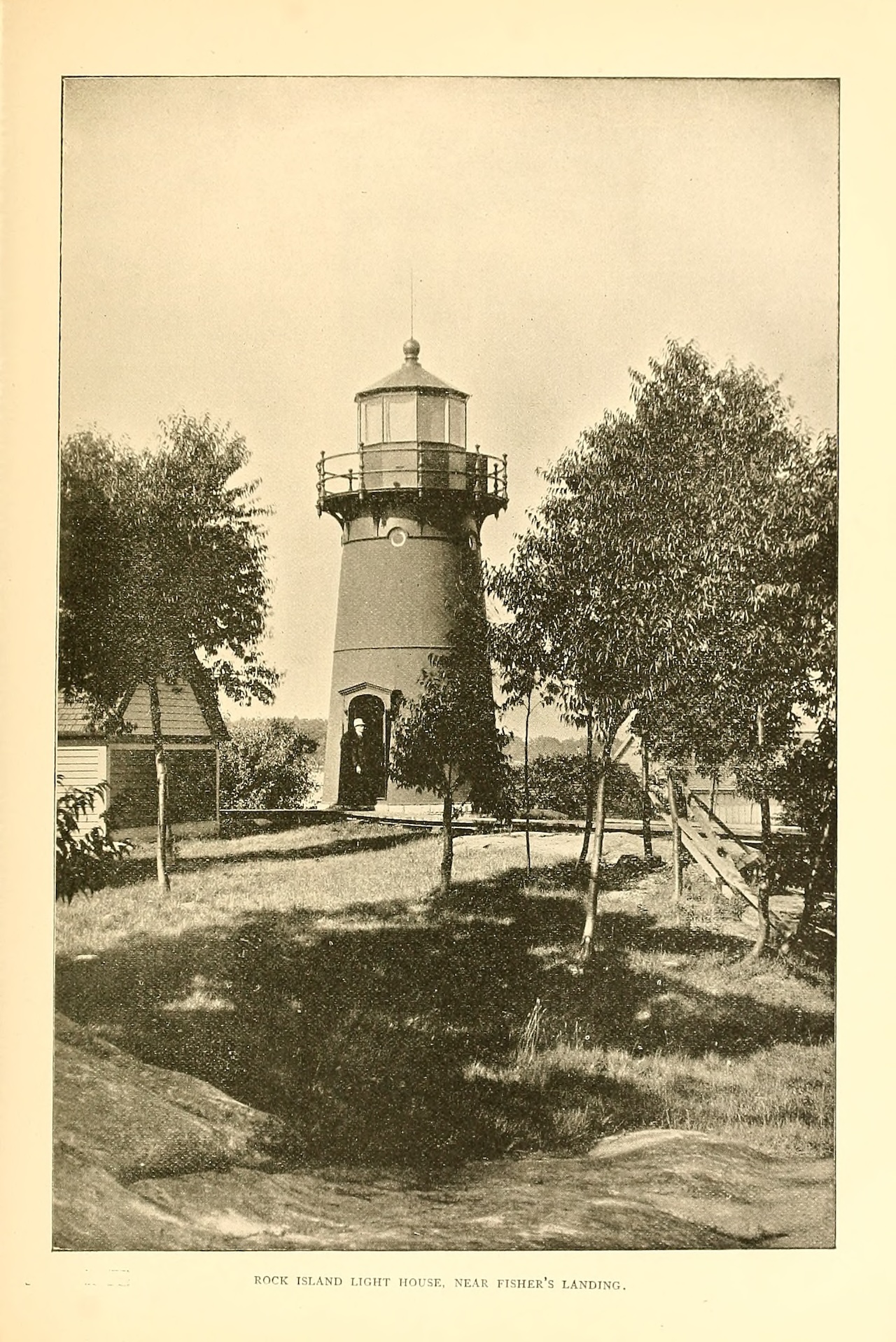
Johnston would serve as the lightkeeper from 1853 – 1860, and spend his final years at the Walton House in Clayton, a hotel his son, Stephen “Dick” Decatur Johnston, purchased in 1868. During Johnston’s tenor as lightkeeper, the lighthouse was refitted, and it would be a number of years before any further changes to the 4-acre island were made.
In 1882, the old brick lighthouse’s function was replaced with a new iron tower, as shown in the photo above. The tower was placed at the highest portion of the island. Two years later, the current Victorian house was built (it has not been determined by this writer if the original brick house was removed at this time or when the iron tower was constructed.

Two well-known shipwrecks followed later that decade, beginning with the steamer Onconto, from the N. T. Co. Line, which was making its first trip since experiencing a “disaster” the previous fall. According to a July 7, 1886 Watertown Daily Times article–
(The Onconto) struck a rock just below Rock Island lighthouse about seven o’clock last night. She sank this morning about four o’clock, stern under water, bow up high and dry. Fifteen passengers and twenty-eight men composing the crew were taken off in life boats to Fisher’s Landing and are well cared for.
Subsequent efforts to remove cargo resulted in the ship leveling until, finally, the bow-end sunk, plunging the entire boat. The A. E. Vickery shipwreck occurred nearby on August 17, 1889, when the ship struck a shoal as it entered the American Narrows on its way to Prescott, Ontario. Its remains have become one of the Thousand Islands’ underwater diving attractions.
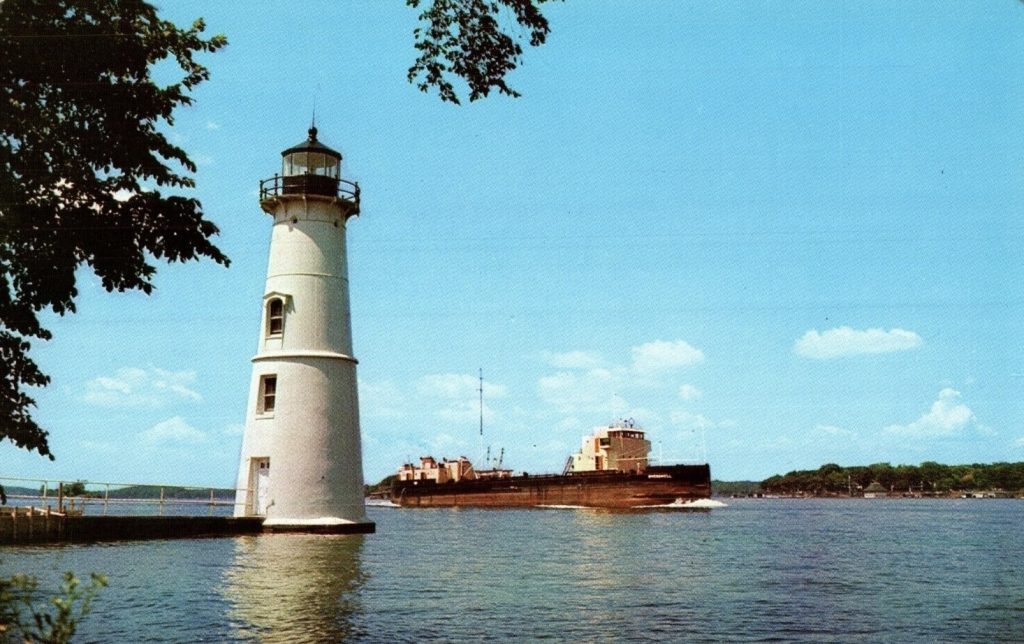
Five years later, in 1894, the lighthouse’s platform was raised an additional five feet. This was followed in 1903 by the structure’s relocation to its current location, off the island’s north end.
One of the longest-tenured lightkeepers was John C. Belden, who served in the capacity from 1912—1940 before retiring. He had previously served in the same capacity at Tibbetts Point in 1910, having been an assistant there the previous four years. He passed away two years later, in 1944, at the age of 69.
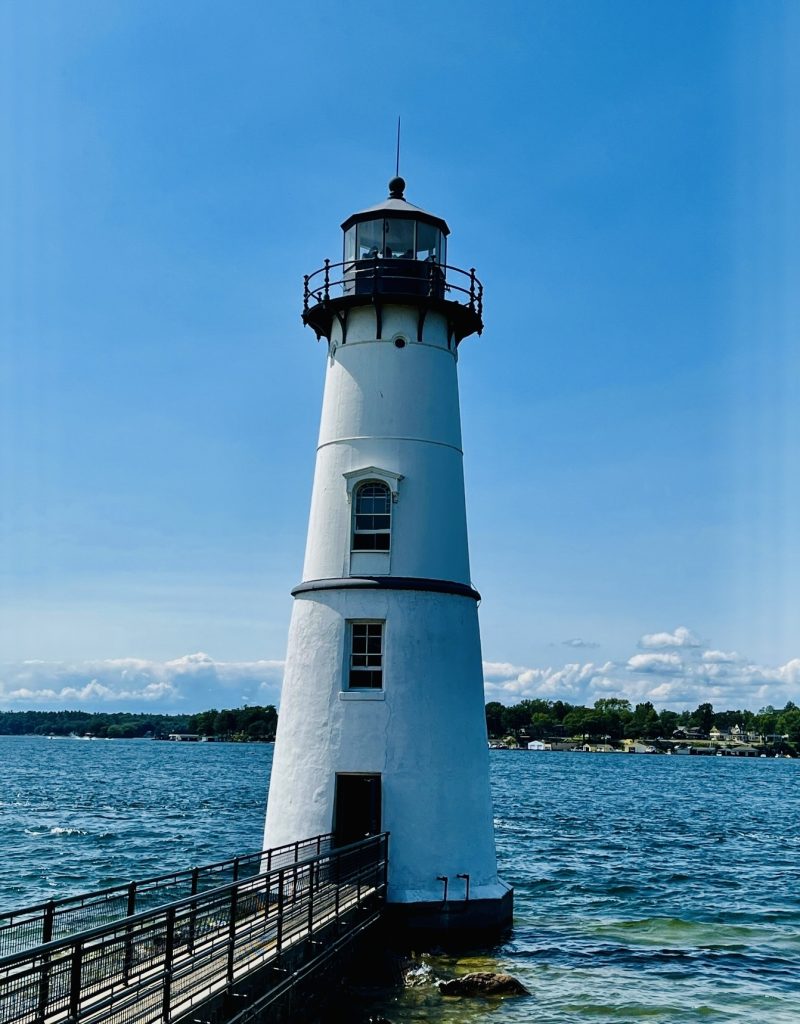
The lighthouse ceased operating as an official navigation aid in 1958, later becoming part of the New York State Office of Parks, Recreation and Historic Preservation in 1976. The September 1, 1976 edition of the Watertown Daily Times reported–
PARK COMMISSION GIVEN LIGHTHOUSE
The Federal Bureau of Outdoor Recreation has announced a transfer of surplus property—the Rock Island Lighthouse in the St. Lawrence River—to the Thousand Island Park Commission, according to a spokesman for Sen. Jacob K. Javits.
The property, valued at $50,000, comprises an island of about four acres, approximately 10 to 15 miles west of Orleans in Jefferson County, the spokesman said.
It includes a 50-foot-high light tower, frame lightkeeper’s dwelling, workshop, boathouse, paint locker, generator house and concrete seawall.
Two years later, The Times reported six youths between the ages of 16 to 21 had begun the first phase of a renovation program under the supervision of Donald Thompson. They were tasked with painting, installing a new roof, cleaning ironwork, and removing dead trees and brush. The article also mentioned that the property was originally powered by oil and converted to electricity in 1939. A few months later, the Rock Island Lighthouse was added to the National Register of Historic Places.

In 1983, further maintenance occurred thanks to the efforts of Mannie Jerome, Syracuse, who owns a cottage opposite the lighthouse in Fineview. Jerome launched a fund drive that raised $8,665 to rehabilitate the lighthouse after concern was expressed about the need for immediate repairs. Later that year, interior renovation continued after the exterior work was completed.
Today, the Rock Island Lighthouse continues as a state park since 1976, drawing several thousand visitors a year. More information can be found on the New York State Parks, Recreation and Historic Preservation website.
Below: a short video from the New York State Parks YouTube channel promoting Rock Island Lighthouse.


